

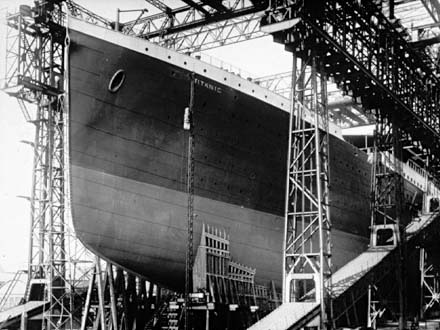
It all began on an evening in 1907, when Mr and Mrs J. Bruce Ismay dined with Lord and Lady Pirrie at Devonshire House, the Pirrie resedence in Belgrave Square in London. Ismay was Managing Director of one of Britain's greatest steamship companies, the White Star Line; Lord Pirrie was Chairman of Harland & Wolff of Belfast, which had always built White Star ships.
After dinner, almost casually, Ismay and Pirrie drew up rough plans for three great trans-atlantic liners, far larger than any that had been built. They would not be the fastest, but they would certainly be the most spacious and luxurious liners afloat.
-Construction began on March 31, 1909.
-Titanic was built in the Irish province of Ulster, in the city of Belfast.
-Harland & Wolff shipyards, where White Star Lines' ships were built had to make new piers, gantrys, and special floating cranes to accomodate Titanic.
-The hull alone weighed in at approx. 26,000 tons.
-Timber props were used to hold the hull up during construction.
-Her hull was launched to be fitted out in May of 1910. Tickets for the event were sold in benefit of a local children's hospital.
-The entire ship weighed in at 46,328 tons.
-14,000 men built Titanic.
-There were nine decks which made the ship 104ft. tall, from keel to bridge, or 135ft. in total (from keel to the top of the funnels). 35ft. of this was below waterline.
-Titanic was 882ft. 9in. long (1/6 of a mile) and 92 feet wide.
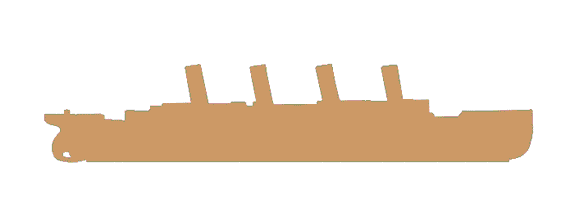
-She was triple-screw (meaning she had a 3 propeller design)
-She would need 650 tons of coal to fire her 159 furnaces (boilers).
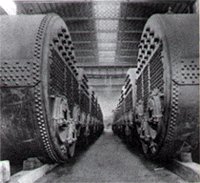
-Out of the four funnels (smoke-stacks), three were real. The fourth (nearest the stern) was used to vent smoke from her kitchens and galleys. It was also used to make the ship look more impressive.
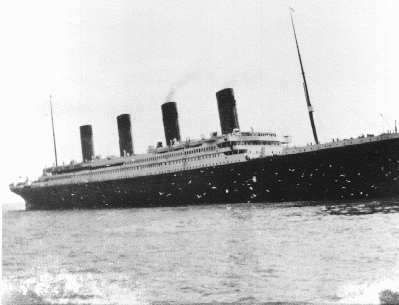
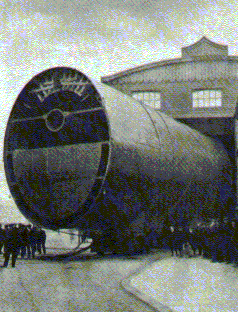
-She had a double-hull of 1-inch thick steel plates.
-She had a heavily publicized system of 16 watertight compartments, sealed by massive doors which could be triggered by a switch on the bridge. If there was any one reason why Titanic was considered unsinkable, it would be because she was designed to float with any 2 joining compartments flooded at the same time. The second option was a scenario where the ship might have a head-on collision with something, any three of the first five watertight compartments leading back from the bow could be fully flooded. The third option was that the first four compartments, entirely, could be flooded, and the ship would still float.
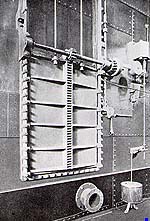
-Because of this, the press began to call her "unsinkable".
-Electric light and heat in every room.
-A gymnasium with a rowing machine, mechanical horse and camel to keep riders fit.

-3 Electric elevators.
-Staterooms and first class facilities that rivaled the best hotels on the mainland.
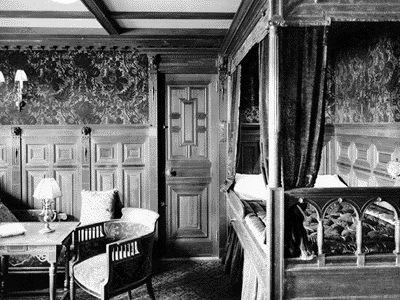
-A swimming pool.

-A six-story, glass-domed grand staircase in the first class area.
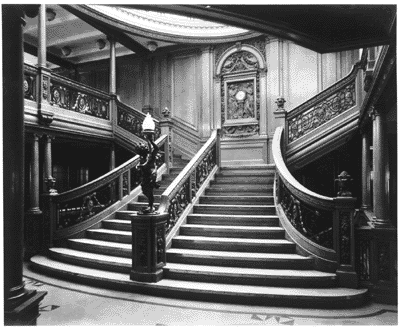
-A squash court (considered extremely modern).
-Indoor toilet facilities.
-A Turkish Bath.
-2 barber shops.
-Harland & Wolff managing director Alexander Carlisle's original design called for 48 boats. He even installed new davits from the Wellin company, which could hold and extra row of boats, but when Ismay declined, trying to accomodate the client, Carlisle did not press the point.
-Titanic left Belfast for Southampton on April 2, 1912.
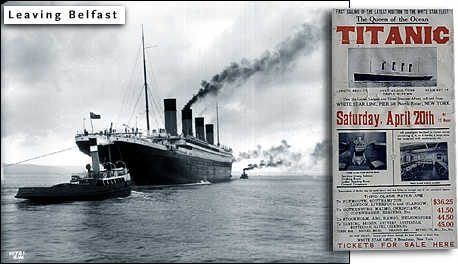
-Her maiden voyage was delayed by the collision of her sister ship Olympic which required extensive repairs from the Harland & Wolff shipyard who were already struggling with Titanic. It was postponed from March 20 to April 10.
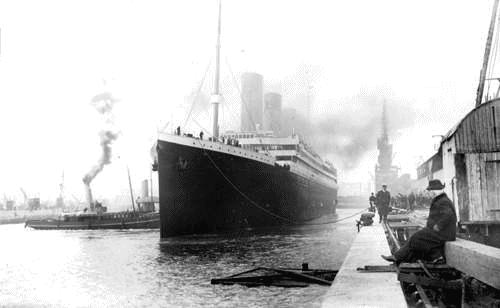
-She set sail on Wednesday April 10, 1912 at 12:00 PM. By sunset, Titanic had stopped in Cherbourg, France to pick up more passengers. Among the most illustrious to embark, was millionaire tycoon John Jacob Astor and his pregnant new wife Madeleine. The gossip in the first-class dining saloon may have surrounded the recent scandal around Astor's divorce and hasty re-marrige to this beautiful, much younger woman. That evening Titanic sailed for Queenstown, Ireland, and at 1:30 PM on Thursday April 11, she headed out into the Atlantic.

-While Titanic was leaving Southampton, she steered close to the liner New York. The pressure that her propellers created pulled New York's stern towards Titanic. All of a sudden, the ropes holding New York to the pier snapped. Captain Smith immediately gave the ship a sharp turn and sped up a little. This gave time for some tugboats nearby to grab New York's stern and tow it back to the pier to be re-tied. Many believed that this was a bad omen for a ship's maiden voyage. How ironic that the other ship involved was named "New York"...
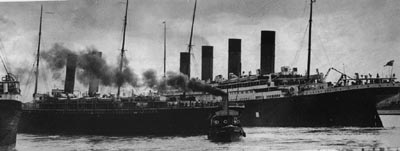
-She had 2,207 passengers and crew on board. Her cargo included one Renault automobile. She had approximately 560 tons of cargo which included 11,524 individual pieces.
-On Friday April 12, Titanic's wireless room received a brief warning from the french liner La Touraine. She had sighted a large field of ice in her path. Fourth Officer Boxhall calculated the field to be well to the north of Titanic's route.
-On Sunday, April 14, at a hymn singing session in the second-class dining room, the reverend Carter lead the congregation in the chorus of the hymn "For Those In Peril On The Sea."
The Sinking The Discovery Timeline Downloads Links Awards Webrings